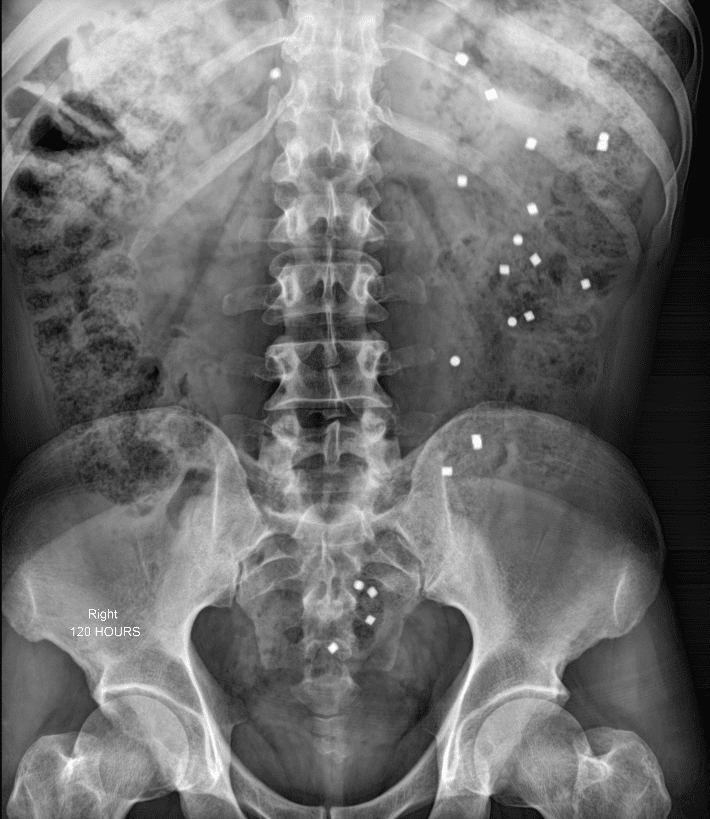There are further, less frequently performed investigations of the colon, rectum and anus, which you might need for some specific purposes.
Colonic transit study (Sitz-mark test):
This test is a simple and easy test to investigate constipation. The reason why it is not performed very frequently, is that the vast majority of patients score normal on this test, although still believing they have constipation.
It is also inconvenient for constipated patients, because they must avoid taking any laxatives during the 6 days period of the test. On the first day of the test a capsule is taken orally, which contains small radiopaque markers (which shows up on X-ray). Six days later a plain abdominal X-ray is performed, and the number of markers counted. If more than 20% of the markers are still in the bowels, constipation is diagnosed.
PNTML – Pudendal Nerve Terminal Motor Latency:
This test investigates the speed of nerve conduction in the pudendal nerve, which supplies the perineum, including the anus. This test is diagnostic for bowel incontinence caused by problems with nerve conduction.
The reason why it is not performed regularly, is that there are no good standard values to judge the result. It varies from center to center depending on the measuring method, and there is a wide variation from patient to patient too.
Anal myometry and myotonometry:
These investigations are only used in research settings to directly measure the anal sphincter or pelvic floor muscles electrical activity or tone.
